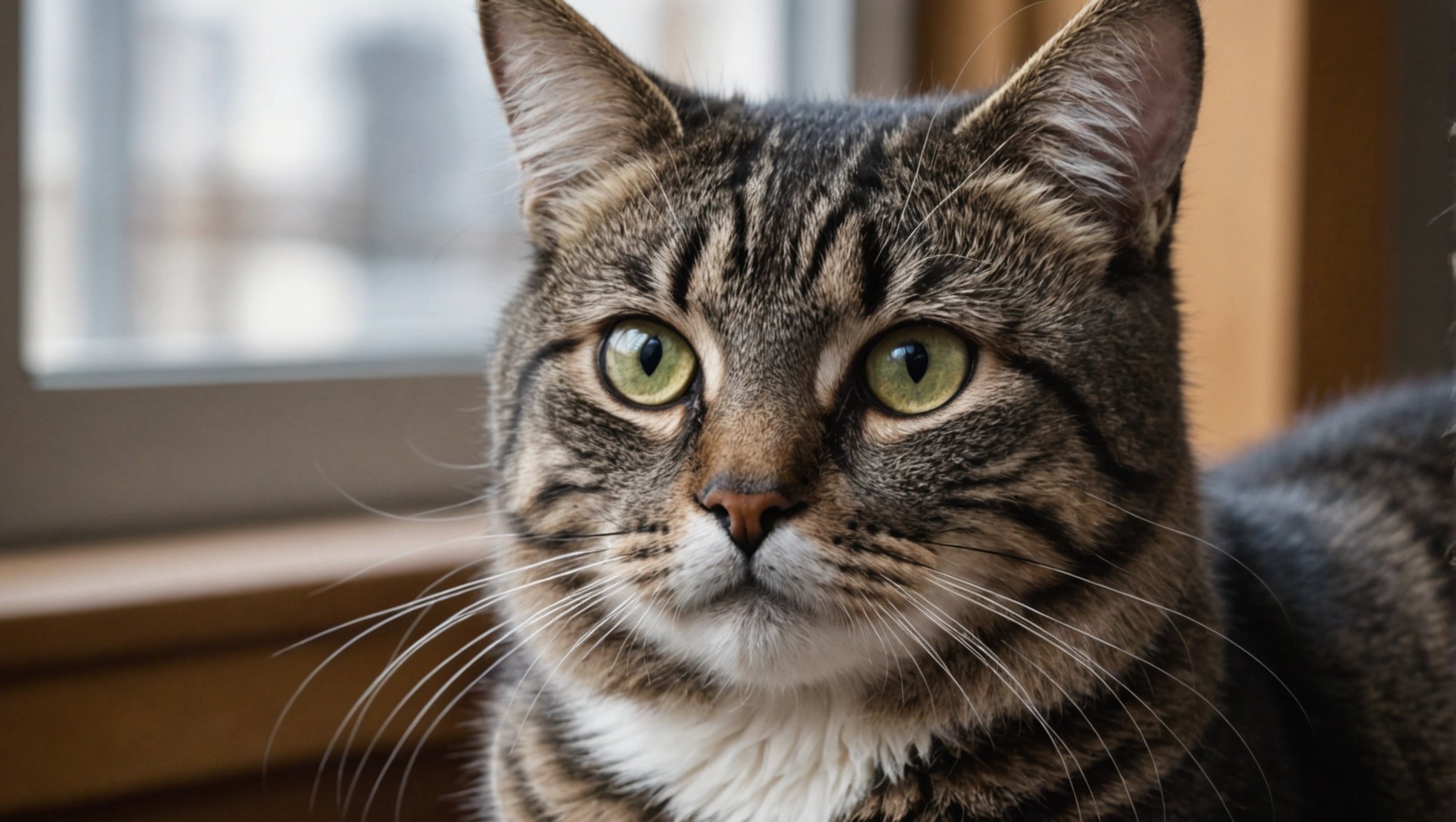Whiskers are more than just charming features on your cat; they’re vital sensory tools that help your feline navigate their environment. An unexpected whisker trim can disrupt their ability to gauge space and depth, making care essential. Understanding how to maintain these delicate structures enhances your cat’s sensory health, ensuring they feel secure and confident in their surroundings. Discover practical strategies to keep your cat’s whiskers healthy, celebrating their unique role in your pet’s well-being.
Importance of Cat Whiskers in Sensory Health
Cat whiskers are not just charming facial features; they play a crucial role in a cat’s sensory perception and overall health. These specialized hairs, known as vibrissae, are deeply embedded in the cat’s anatomy and are highly sensitive to touch and vibrations. This sensitivity allows cats to detect even the slightest changes in their environment, making whiskers essential for their spatial awareness and navigation.
A lire en complément : Understanding Feline Urination Issues: Effective Solutions and Potential Causes for Inappropriate Behavior
Whiskers act as a sensory tool that helps cats judge distances and the size of objects, which is particularly useful in low-light conditions or when navigating tight spaces. This whisker health is vital, as damaged or overstimulated whiskers can lead to stress and disorientation in cats.
Moreover, the sensitivity of whiskers enhances a cat’s ability to perceive its surroundings. Each whisker is connected to a complex network of nerves, allowing cats to receive detailed information about their environment. This heightened sensory perception is crucial for hunting, avoiding obstacles, and maintaining balance.
Dans le meme genre : Welcoming a New Baby? Essential Tips for Easing Your Cat into the Family Transition
In summary, the health and functionality of cat whiskers are integral to their sensory perception and ability to interact with the world around them. Ensuring whisker health is essential for a cat’s well-being and comfort.
Essential Tips for Maintaining Whisker Health
Proper whisker care is crucial for ensuring your cat’s overall well-being. Regular grooming is an essential part of this process. By gently brushing your cat’s fur, you can prevent whisker breakage and reduce stress. Avoid using combs with narrow teeth, as these can snag and damage the delicate whiskers.
Feeding your cat a balanced diet also plays a significant role in maintaining healthy whiskers. Nutrients such as Omega-3 fatty acids are vital for promoting strong hair follicles, which in turn support robust whisker growth. Ensure that your cat’s diet includes high-quality protein sources and essential vitamins to keep their whiskers, and overall health, in top condition.
Creating a safe environment for your cat is another important strategy for whisker health. Cats often use their whiskers to navigate their surroundings, so it’s vital to keep their living space free from clutter and sharp objects that could harm their sensitive vibrissae. Providing ample space and soft surfaces can help minimize the risk of whisker damage. By implementing these grooming tips and environmental strategies, you can support your cat’s whisker health and enhance their sensory experience.
Common Issues Related to Whisker Care
Understanding whisker problems is crucial for maintaining your cat’s sensory health. Cats may experience whisker stress when their vibrissae are overstimulated, often due to constant contact with objects. This can lead to discomfort and behavioural changes such as reluctance to eat from deep bowls.
Signs of whisker stress include:
- Avoidance behaviours: Hesitation or refusal to engage in activities they previously enjoyed.
- Increased irritability: Cats may become more reactive or stressed.
- Changes in eating habits: A preference for shallower dishes or eating less.
If left unaddressed, whisker problems can result in further cat health issues. Overstimulated whiskers can lead to stress, affecting a cat’s overall well-being and potentially causing disorientation or anxiety.
To identify and address whisker-related concerns, observe your cat’s behaviour closely. If you notice signs of discomfort, consider adjusting their environment. Opt for wide, shallow food dishes and ensure their living space allows free movement without excessive whisker contact. Regularly check for any physical damage to whiskers and consult a veterinarian if concerns persist. Prioritising whisker health is essential for your cat’s comfort and happiness.
Preventive Measures for Whisker Health
Ensuring cat wellness involves more than just basic care; it requires proactive steps in whisker maintenance. Regular veterinary check-ups are crucial for monitoring overall health and identifying any potential whisker-related issues early. Vets can provide guidance on maintaining whisker integrity, ensuring your cat’s sensory tools remain in top condition.
Incorporating preventive care into your routine also means selecting the right toys. Choose toys that are safe for whiskers, avoiding those with sharp edges or small parts that could cause damage. Soft, plush toys or those designed specifically for cats are ideal, as they allow for play without risking whisker injury.
Creating a stress-free environment is equally important in supporting whisker health. Cats are sensitive creatures, and a calm, clutter-free space can help reduce stress and prevent whisker overstimulation. Ensure your cat has access to quiet areas where they can retreat and relax, away from loud noises or constant disturbances.
By focusing on these preventive measures, you can enhance your cat’s overall well-being and protect their vital whiskers, ensuring they continue to navigate their world with ease and confidence.
Expert Insights on Whisker Care
Understanding the nuances of whisker care is essential for maintaining your cat’s well-being. Veterinary advice highlights the importance of recognising changes in cat behaviour as indicators of whisker health. Dr. Emily Carter, a renowned veterinarian, suggests observing your cat’s interaction with their environment. “Cats with healthy whiskers exhibit confidence and curiosity,” she notes.
Expert tips include selecting food bowls that minimise whisker contact to prevent overstimulation. Veterinarian Dr. John Harris recommends shallow, wide dishes to alleviate potential stress. “This simple change can significantly improve a cat’s eating experience,” he explains.
Case studies provide further insights into the impact of whisker health. For instance, a study involving 50 cats revealed that those with compromised whisker health displayed increased anxiety and reluctance to explore new spaces. This underscores the vital role of whiskers in sensory health.
For cat owners seeking more information, numerous resources are available. Books on feline sensory health and online articles by veterinary experts offer in-depth knowledge. Consulting with a veterinarian can also provide tailored advice, ensuring your cat’s whiskers remain a tool for exploration and comfort.
















